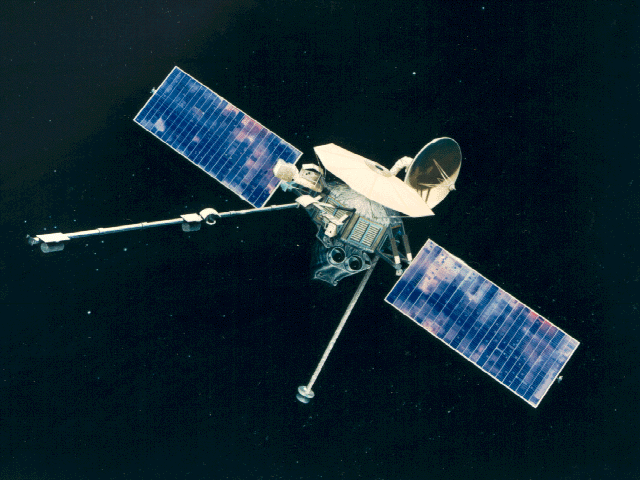On March 16, 1975 — 35 years ago today — the Mariner-10 spacecraft made its last flyby of Mercury.

(Mariner-10. NASA image.)
This was also its closest flyby, passing within 327 km (203 mi) of the planet. On this flyby, Mariner-10 discovered that Mercury has an intrinsic magnetic field.
Mariner-10 was the first spacecraft to visit two planets, and the first to use a gravity-assist maneuver in a “slingshot” around Venus to reach Mercury. The mission succeeded despite some difficulties, however. One problem the mission encountered was of special interest to spacecraft designers in the future:
A trajectory correction maneuver was made 10 days after launch. Immediately following this manuever the star-tracker locked onto a bright flake of paint which had come off the spacecraft and lost lock on the guide star Canopus. An automated safety protocol recovered Canopus, but the problem of flaking paint recurred throughout the mission.
Another first for the mission occurred when an attitude control problem used up excessive propellant. Mission planners devised a never-before-used procedure to “use … solar wind on the solar panels to orient the spacecraft.”
Since 1975, when the last of its attitude control propellant was used up, Mariner-10 has remained in orbit around the sun.







